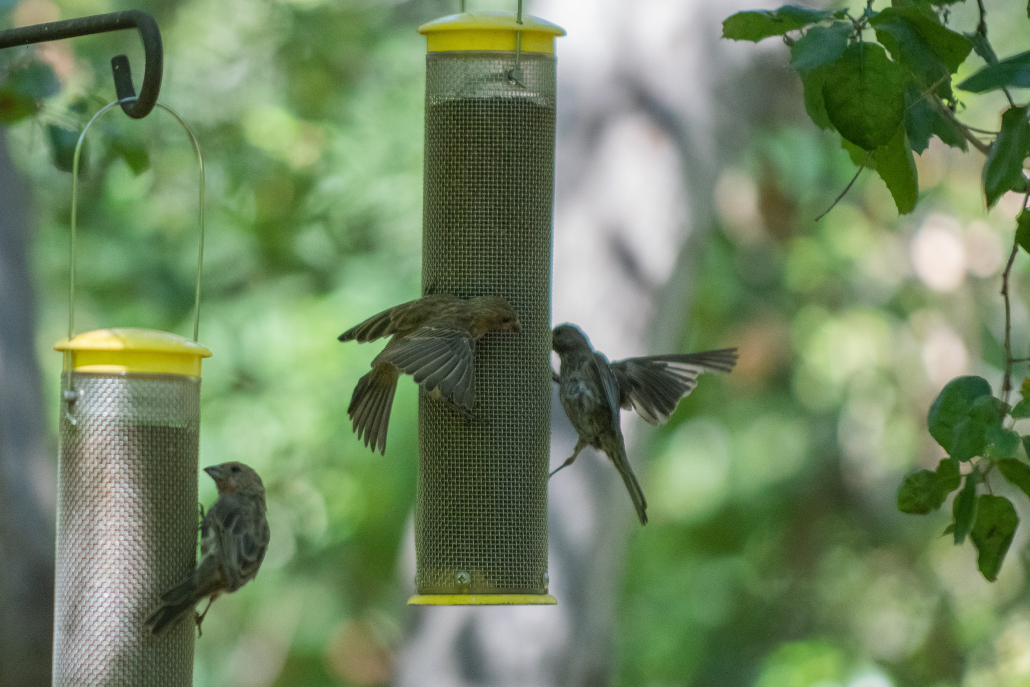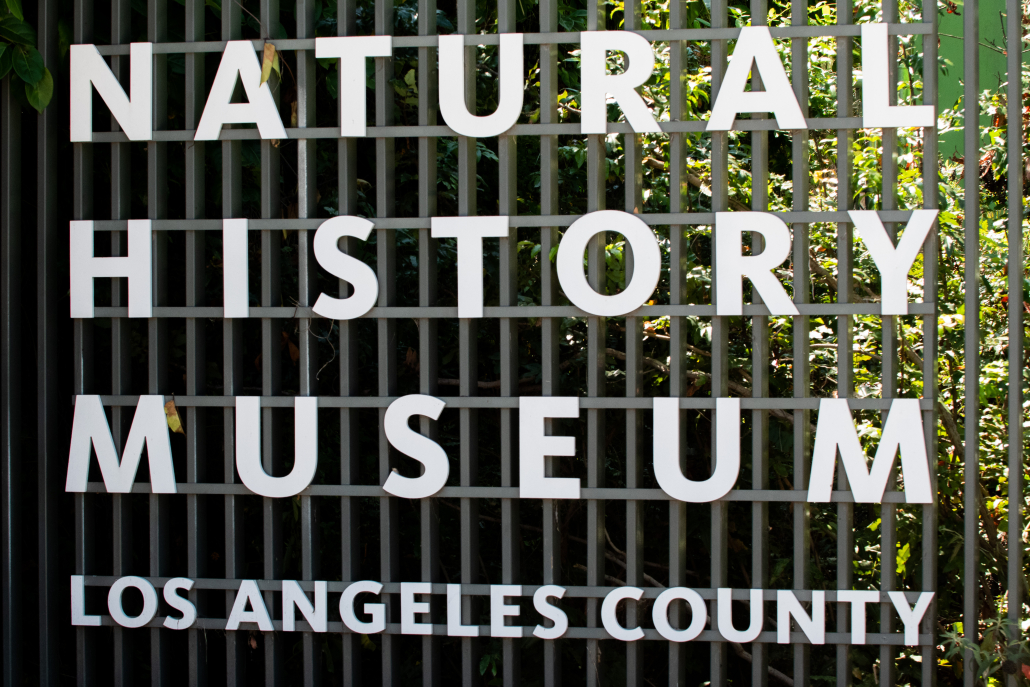Unique birds and other species can be seen in LA
Experience all the flora and fauna the Natural History Museum has to offer.
Experience all the flora and fauna the Natural History Museum has to offer.

While birding may seem mundane, it is incredibly peaceful to take some time and connect with nature while wrestling with the throes of being a university student. The Natural History Museum, located just a crosswalk away from Mudd Memorial Hall of Philosophy, offers this opportunity in its Nature Gardens.
The Gardens were a vision NHM scientists, landscape architects and Mia Lehrer and Associates created after repurposing a parking lot in 2010 and completing it in 2013. They used 600 species of native and nonnative plants in an environment that is meant to mimic Southern California’s almost Mediterranean climate.
The museum lets people explore the gardens and see a host of birds and wildlife native to the Los Angeles area. The bird watching happens anytime between 11 a.m. to 12 p.m. at the Bird Viewing Platform. Visitors may be able to see the house finch, a small-bodied brown bird that has a red breast and head and a very large tail; the lesser goldfinch, a tiny, small-beaked songbird that has a vibrant yellow breast; and the mourning dove, a brownish grey “slender-tailed, small-headed dove.”
The platform is quite large and has screens that allow people to look into the bird space. Inside the space, it has been designed to attract the local species and has many trees and enticing objects to offer “food, shade, nesting material and perches.” One might have the opportunity to see many birds flocking around food, resting on the tree branches or creating their intricate nests.
According to an article published by the Princeton University Press, “the presence of wild birds has been shown to measurably improve people’s spirits and health regardless of where they are encountered.” It’s no secret that being immersed in nature is great for the mind, and for only $14 (or a USC student ID), you can experience everything the Nature Gardens, and the museum — the largest museum of its kind in the West — has to offer.
Museum-goers also have the opportunity to visit the edible garden, which has an abundance of plants that can be grown in the L.A. climate. You may see watermelons, squash, a variety of tomatoes, two types of basil and a plethora of fun facts about some of the plants and herbs. There are also hummingbird feeders, an urban waterfall and various other gorgeous views that create a botanical nirvana right here in L.A.
For any student in search of a quintessential day of outdoor solace, the Natural History Museum is a must-visit destination. Add some mindfulness into your day by listening to the soft chirping of the birds and the rustle of the leaves; smell the fragrant flowers and sweet tea plants; see the vibrant purple of the eggplants and the sultry red tomatoes; and feel the sun envelop you in its warm embrace and touch the various fruits and veggies being grown.

Off to the right of the Bird Viewing Platform, through the double doors, there is a Nature Lab that puts all of L.A.’s biodiversity at your fingertips. Here, you can see the stories of a variety of flora and fauna found right in our backyard, including birds, raccoons and several types of bugs. The exhibit is also home to live animals such as turtles, snakes and rats, each thriving and incredibly cute.
Museum workers walk around providing facts about specific animals and answering potential questions that visitors may have. The walls also spoke for the exhibit, saying, “L.A. is the birdiest county in the U.S.: More than 500 species of birds live in or pass through L.A.” and “Adopted Beauties: Neither L.A.’s official city tree (Coral Tree) nor our city flower (Bird of Paradise) is native to L.A.”
The exhibit also contained interactive elements, such as a notebook where individuals — primarily kids — shared a nature story. It was adorable to see future generations sharing their unique and hilarious stories. One young museum-goer wrote, “I wish we could talk to nature,” spelled “I wish we cuad talk to nutere.”
Visitors can also help museum researchers better understand the natural world around us by submitting pictures of potentially new species of flora and fauna unique to L.A. Currently, the museum is searching for parrot sightings, among many other plants and animals. The fun and interactive approach encourages individuals to contribute to how human impact has shaped L.A.’s diverse environment. You can send your observations to [email protected].
For example, NHM says, “How do these parrots, which originally came from Mexico and Central and South America for the pet trade, survive here? We’ve planted L.A. with trees that bear fruit and nuts that parrots like to eat. With plenty to eat and a mild climate, parrots have it easy here.”
There are a variety of unique exhibit unveilings occurring in the coming months like the 2022 Benjamin Mkapa African Wildlife Photography Awards gallery, which is on display until Oct. 9 and the Spider Pavilion, which will be on display beginning Sept. 17. The fall and winter months serve as a migration season for birds, and interestingly, Los Angeles serves as a sort of layover for many species of birds who are migrating and is also the final destination of many birds coming from the South. As such, it is a season where birdwatchers begin to see unusual birds in the region.
Try your luck during the fall semester and check out NHM’s Bird Viewing Platform. Whether you’re from L.A. or another corner of the world, the Natural History Museum has something for everyone.
This site uses cookies. By continuing to browse the site, you are agreeing to our use of cookies.
Accept settingsDo Not AcceptWe may request cookies to be set on your device. We use cookies to let us know when you visit our websites, how you interact with us, to enrich your user experience, and to customize your relationship with our website.
Click on the different category headings to find out more. You can also change some of your preferences. Note that blocking some types of cookies may impact your experience on our websites and the services we are able to offer.
These cookies are strictly necessary to provide you with services available through our website and to use some of its features.
Because these cookies are strictly necessary to deliver the website, refusing them will have impact how our site functions. You always can block or delete cookies by changing your browser settings and force blocking all cookies on this website. But this will always prompt you to accept/refuse cookies when revisiting our site.
We fully respect if you want to refuse cookies but to avoid asking you again and again kindly allow us to store a cookie for that. You are free to opt out any time or opt in for other cookies to get a better experience. If you refuse cookies we will remove all set cookies in our domain.
We provide you with a list of stored cookies on your computer in our domain so you can check what we stored. Due to security reasons we are not able to show or modify cookies from other domains. You can check these in your browser security settings.
These cookies collect information that is used either in aggregate form to help us understand how our website is being used or how effective our marketing campaigns are, or to help us customize our website and application for you in order to enhance your experience.
If you do not want that we track your visit to our site you can disable tracking in your browser here:
We also use different external services like Google Webfonts, Google Maps, and external Video providers. Since these providers may collect personal data like your IP address we allow you to block them here. Please be aware that this might heavily reduce the functionality and appearance of our site. Changes will take effect once you reload the page.
Google Webfont Settings:
Google Map Settings:
Google reCaptcha Settings:
Vimeo and Youtube video embeds:
The following cookies are also needed - You can choose if you want to allow them:
